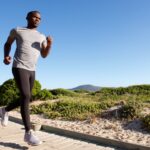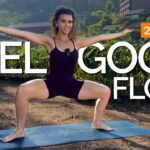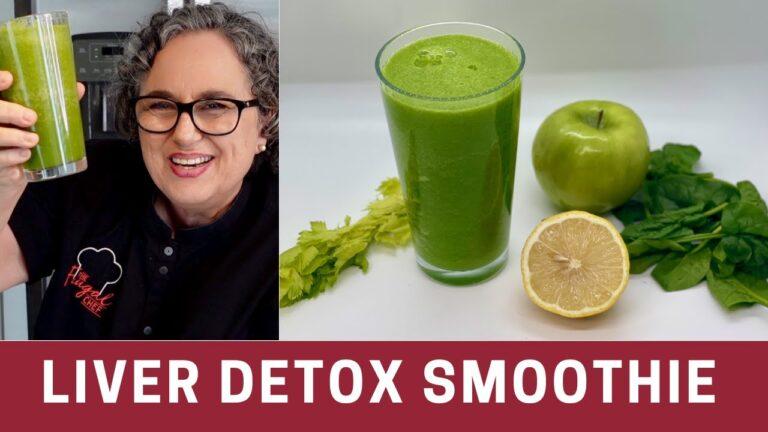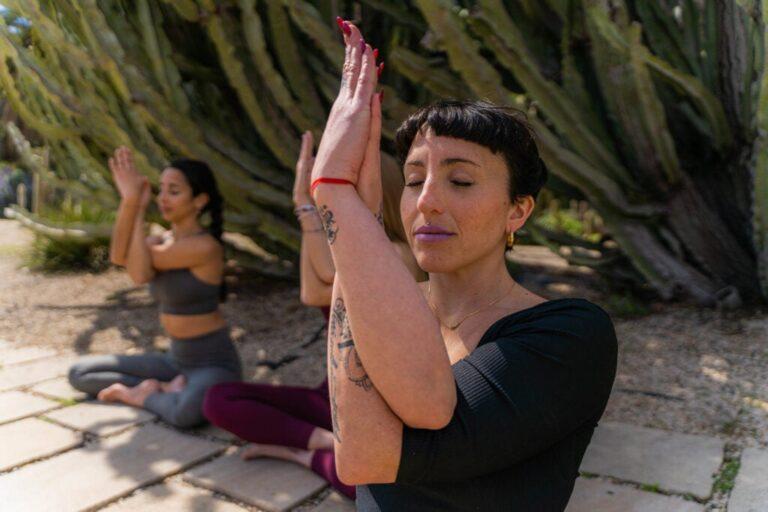Heading out the door? Read this article on the new Outside+ app available now on iOS devices for members!
Download the app.
An overlooked and underappreciated fact about yoga is that just about every pose strengthens your core.
“One of the things about developing a regular yoga practice is that you don’t have to ‘do a core workout’ to consistently be creating strength in your core,” says certified yoga instructor Kate Lombardo, lead trainer at YogaRenew Online Yoga Teacher Training. “A physical yoga practice inherently targets these areas.”
Most postures target multiple core muscles, focusing not just on the overworked and overemphasized abdominals but the obliques, hip flexors, and muscles of the back and pelvic floor. The core strength derived from these poses is considered functional strength training, meaning it helps you navigate everyday life with more strength and ease. That includes your other exercise and outdoor adventures, including running, hiking, cycling, mountain biking, and skiing.
An additional benefit of yoga is breath awareness. “Bringing focused attention to your breath helps regulate your nervous system and center the mind,” Lombardo explains, citing the connection between yoga and your mood. “When you actively engage in linking your body, mind, and breath, you bring yourself to a place of balance, which helps to reduce stress and anxiety.” Research backs this up.
Although each yoga pose boasts an array of benefits, Lombardo finds the following poses to be uniquely beneficial at strengthening your core and boosting your mood.
5 Yoga Poses to Boost Your Core Strength (And Your Mood)
1. Navasana (Boat Pose)
The burn of Boat Pose can be misleading. Although it may feel as though only your abs are working, the posture is a comprehensive core strengthener, says Lombardo. It recruits several commonly underused muscles, including the pelvic floor and the transverse abdominis(a deep core muscle), and if you straighten your legs, you also activate and strengthen the hip flexors and psoas.
Additionally, lifting your chest requires engagement of the upper back muscles. “The open chest that’s created opens up the space around the heart. Any time the heart space is open, it releases positive energy, which helps to uplift the mood.”
How to:
1. Sit with your legs extended straight in front of you.
2. Bend your knees, place your feet on the mat, and lean back to balance on your sit bones. Bring your hands behind your knees, lift your feet off the floor, and bring your shins parallel to the mat. Stay here or, for more engagement, straighten your legs and reach your arms forward.
3. Breathe as you maintain a straight spine. Keep drawing your lower ribs toward your navel.
2. Lunge Twist
Incorporating a twist into your lunge can help you engage the tricky-to-target oblique muscles of your side body, Lombardo explains. Also, don’t forget about the stretch in your extended back leg, which lengthens the hip flexors, including the psoas.
According to yoga tradition, “Stagnant energy can create feelings of sluggishness and low motivation,” says Lombardo. She explains that twists move energy around the entire spinal column, which counteracts lethargy and is believed to help elevate your mood and energize your mind and body.
How to:
1. Step into a low lunge with your right leg forward and your back knee lifted.
2. Press your left hand into the mat and twist your chest to the right as you reach your right hand toward the ceiling. Turn your gaze to your right thumb.
3. To keep your left body from sagging, press through your left heel and reach through the top of your head.
4. Repeat on the other side.
3. Tree Pose
This standing balancing posture engages the entire musculature of your core, including the lower abdominal and pelvic floor muscles, says Lombardo. And if you choose to lift your arms in Tree Pose, you also engage the muscles of your back body.
How, exactly, can teetering on one leg enhance your mood? “Keeping the balance requires the mind to be fully focused on the present moment, which aids in creating a sense of calm,” says Lombardo, and lifting of the chest makes it “an automatic feel-good pose.” And when wobbling happens, a sense of humor might be your strongest fallback.
How to:
1. Stand tall. Shift your weight into your right leg and slowly lift your left foot and turn your knee out to the side.
2. Place your left foot on your inner right thigh, shin, or ankle and bring your palms together at your chest. Fix your gaze straight ahead.
3. Start to reach your arms overhead. Keep lifting your low belly in and up and hug your ribs in toward center of your body.
4. Ardha Chandrasana (Half Moon Pose)
What does this yoga pose have in common with lunges, squats, deadlifts, and other full-body strength-training exercises? They activate muscles throughout your body to support and stabilize you in a challenging position. “Opening the chest to the side while keeping the spine long and lifted from the crown of the head to the tailbone requires full engagement of the muscles of the back, transverse abdominal muscles, and low belly,” says Lombardo.
If you tend to be super focused and serious about your yoga or workout, Half Moon Pose can remind you to practice with an element of playfulness and childlike wonder, especially when attempting something outside of the norm. “As adults, it’s not often that we allow ourselves to find a sense of humor related to our physical bodies. But balancing on one leg is a silly thing to do!” says Lombardo.
Consider it a reminder that movement doesn’t need to be staunchly serious to be beneficial for the body. And you just might get a high from surprising yourself with what your body can do.
How to:
1. Step into a low lunge with your right leg forward and your back knee lifted.
2. Place your right hand slightly in front of your foot and come onto your fingertips or a block. Shift your weight into your right leg as you slowly straighten your right leg and lift your left leg off the floor so it’s parallel to the mat.
3. Slowly start to turn your chest and toes toward the left. Reach your left arm toward the ceiling. Gaze straight ahead or slowly turn your gaze toward your left thumb. Breathe.
4. When you’re ready, come back to a lunge position. Repeat on the other side.
5. Handstand Prep
Balancing on your hands isn’t exactly an easy thing. Any inversion or arm balance demands synergistic activation of all your core muscles to stabilize your body. Take Handstand. “To fully stack the hips above the shoulders, the low belly must lift in and up and the upper back muscles have to firm in,” explains Lombardo. “Holding this pose for a few breaths happens by wrapping the side rib and oblique muscles around towards the center.”
Practicing an L-shaped inversion against a wall enables you to strengthen your back, belly, and shoulders and experiment with a different relationship to gravity, all in a supported environment. As with any inversion or arm balance, it also forces you to focus your thoughts.
“Almost all of the stress and anxiety the people experience is a result of either ruminating on something that happened in the past or stressing over something that might happen in the future. But, the second you flip your perspective upside down in a Handstand, the only thing you’re able to do is focus on what’s happening in the present moment, which means all of those mood-killer thoughts fall away,” says Lombardo.
How to:
1. Sit with your back at a wall and your legs extended straight ahead. Note the placement of your feet.
2. Come to hands and knees, facing away from the wall, and place your palms where your heels were. Straighten your legs and come into a short Downward-Facing Dog with your toes on the floor and your heels against the wall.
3. Look back and place one foot at a time on the wall at hip height. Straighten your legs to create a 90-degree angle with your body. For an added core challenge, lift one leg towards the ceiling and then the other.
About Our Contributor
Amber Sayer is a fitness, nutrition, and wellness writer and editor. She holds a master’s degree in exercise science and a master’s degree in prosthetics and orthotics. She is a NCSA-certified personal trainer, UESCA-certified running coach, triathlon coach, and endurance nutrition coach.
This content was originally published here.



















